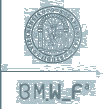Is violence explainable? - Part 5
[ Is violence explainable? ]
What were the consequences of the "Ottoman conquest" in the different parts of the Balkans? What were the Balkan Wars about? What happened in the Balkans during the Second World War? 60 historians and history teachers from 11 Southeast European countries have collected historic material (pictures, testimonies, literature, treaties, newspapers etc.), blended together in four history workbooks published by the Center for Democracy and Reconciliation in SEE in Thessaloniki. Through their multi-national approach, the workbooks want to motivate students and teachers to learn more about their neighbouring countries and to adopt a more critical perspective towards history. The books have already been translated into Serbian and the Serbian authorities have allowed its use in schools.The four workbooks cover the following topics which are common to the history of all Balkan countries:
- The Ottoman Empire
- Nations and States in Southeast Europe
- The Balkan Wars
- The Second World War
and can be downloaded under the following link (English version only). To learn more about their conception and the authors, please refer to the webpage of the Southeast European Joint History Project.
These books are really "work"-books and not textbooks. They are a collection of little fragments of history from all over the Balkans with well-designed questions. Nevertheless, some "basic events" are missing: it seems strange that the 1389 Kosovo polje battle does not appear in the book on the Ottoman Empire. In general, the books contain very few references to Kosovo.
Then, maybe my conception of history teaching is too old-fashioned, but I doubt if this collection of materials can provide the basis for a history course. The 2-page introduction to every workbook does not really give an overall picture of what the book intends to cover, and the extensive time-line provided after the introduction is just a collection of facts. What lacks is the context, the links which can be only created by (longer) texts and comments by the authors. Did they avoid on purpose to provide pupils with comments? Maybe they feared to be biased - but in my eyes, they should have taken the risk of writing texts with a bias towards an "anti-biased" approach... if you see what I mean...
I look forward to your comments! (You will find the "reply" button if you scroll down to the very bottom of this page!)

1 Attachment(s)
< previous Posting next >
<< previous Topic next >>
SEE-EU





Replies
I looked at just one of the texts, on nationalism and state building. Your criticisms would seem to apply, although the selection of materials to excerpt is quite nice.
The books would seem to be intended for primary school instruction. This is at least my impression based on the format (even as a kid, the lists of leading questions in shaded boxes made my head hurt!). What is often done in primary school instruction is that rather than offering courses, short sections of 2-3 weels are dedicated to a topic, using a mixture of materials. In that sense, the book might be more of a resource book than a workbook.
Generally they're nice enough books. They don't seem likely to fundamentally change the way that history is taught or produced.